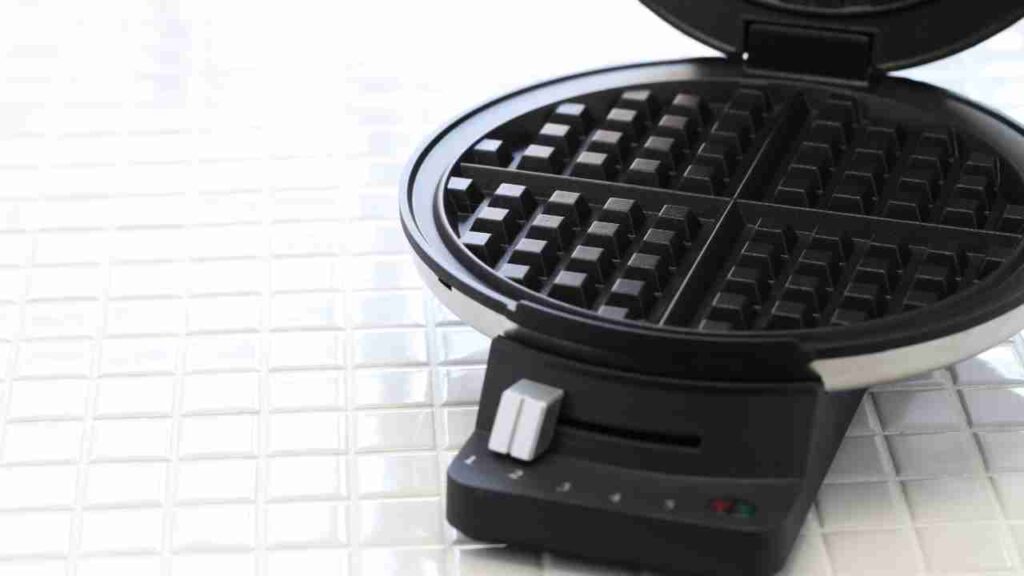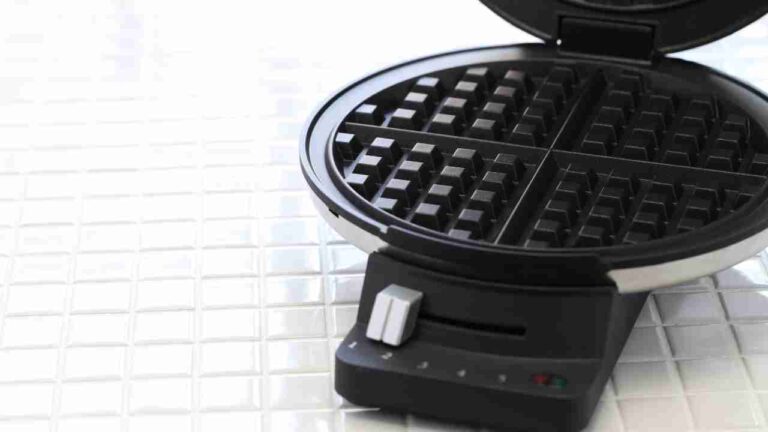Waffles are those crispy, golden treats with fluffy insides and ideal tiny pockets for all the butter and syrup you can handle. Waffles, a traditional American breakfast item, have become a staple of many families nationwide.
With the rising popularity of handmade waffles, an increasing number of individuals are turning to waffle makers to prepare delectable delicacies in the comfort of their homes. But have you ever considered your waffle maker’s energy efficiency? After all, we live in a time when being environmentally responsible and lowering our energy use is more vital than ever.
In this blog article, we’ll delve into the intricacies of waffle maker wattage, focusing on the aspects that influence power consumption and assisting you in making educated selections when selecting the best waffle iron for your requirements.
We’ll look at the many wattages available, weigh the advantages and drawbacks of various alternatives, and give some energy-saving ideas for waffle fans. So strap in for a delightful deep dive into waffle maker power usage!
How Many Watts Does a Maffle Maker Use?
Waffle makers are available in a variety of wattages to meet a variety of purposes and tastes. Knowing the distinctions between these alternatives helps you choose the best appliance for your kitchen. Let’s look at the three main wattage categories for waffle makers:
1. Low-wattage alternatives (200-500 watts)
Pros:
- More energy-efficient, which means cheaper electricity expenses
- Ideal for modest families or occasional waffle-making
- They are often small in size, making them simple to store.
Cons:
- Waffles may take longer to heat up and cook.
- Heat distribution may be less constant, resulting in unevenly cooked waffles.
- It may not be perfect for individuals who need to create waffles rapidly.
2. Options for mid-range wattage (500-1000 watts)
Pros:
- Preheating and cooking times are reduced as compared to low-wattage choices.
- Heat distribution is usually more uniform for evenly cooked waffles.
- Can handle a wide range of waffle kinds and thicknesses
Cons:
- Energy usage is higher when compared to low-wattage choices.
- Because of the larger wattage and additional functions, the initial cost may be higher.
- Bulkier, requiring extra counter or storage space
3. Options with high wattages (1000-1500+ watts)
Pros:
- This waffle maker is ideal for big families or regular waffle-making sessions.
- Capable of swiftly and effectively frying numerous waffles
- Often have additional capabilities for more control over the waffle-making process.
Cons:
- The category with the highest energy use of the three
- Increased power expenses are possible.
- Because of their bigger size and additional functionality, they are often more costly and may need more storage space.
3 Factors Affecting Waffle Maker Wattage:
When you search for the ideal waffle maker, you’ll note that not all waffle irons are equal in power consumption. In truth, various variables influence how many watts a waffle maker needs. Let’s take a closer look at these essential factors:
1. Waffle size and quantity generated
The quantity of electricity your waffle maker requires is directly proportional to its size and the number of waffles it can generate at once. Bigger machines or ones capable of concurrently cooking many waffles, use more watts since they need more energy to heat the larger cooking surfaces.
2. Waffle plate material and thickness
The materials used to produce waffle plates, as well as their thickness, may have an impact on the wattage of a waffle maker. Thicker plates constructed of heat-retaining materials like cast iron may need more energy to attain the necessary cooking temperature.
But, once heated, these materials can more successfully maintain stable heat levels, perhaps leading to more energy-efficient cooking in the long term.
3. Advanced functions (temperature control, timers, etc.)
Waffle makers with complex features like changeable temperature settings and built-in timers may need more electricity to operate. For example, a waffle iron with a wide temperature range must be capable of creating and holding greater amounts of heat, which usually equates to more watts.
Although these features may increase power consumption, they also provide you greater control over your waffle-making process and may result in a better overall experience.
Is 2000 Watts a Lot for a Waffle Maker?
This is considered for commercial essence. This wattage makes it possible to make as many waffles as desired for a long time, regardless of the required power.
Just as it would take a waffle maker that consumes 0.3w per second to prepare waffles for an hour, a 2kw power supply will help you prepare waffles for approximately two hours under the same circumstances, such as standard power outlets, and so on. So, if it’s going to be a lot, it’s left for one’s side of view.
Is 400 Watts a Lot for a Waffle Maker?
This is considered for subsistence needs. Homes that only make a few numbers of waffles will prefer this. However, it’s inevitable that this can’t power the waffle maker for half an hour. While it would be enough for subsistence needs, it might be below par for commercial needs. Moreover, waffle makers that demand high voltage 280v, and so on, may find this power supply too low.
Final Word

It would help if you made your calculations to find out the estimation of power that will be enough. The current and voltage required will determine the power quantity you’ll need to supply. Most products have tips in the product descriptions. Nevertheless, most home-use waffle makers require between 800w-100w power generators to function.
- Texas Shaped Waffle Maker: Crafting State Pride on Your Plate - September 26, 2023
- Bubble Waffle Maker – Elevate Your Culinary Skills - September 26, 2023
- Tater Tot Waffle Toppings: Fun & Delicious Ideas for All! - August 7, 2023
